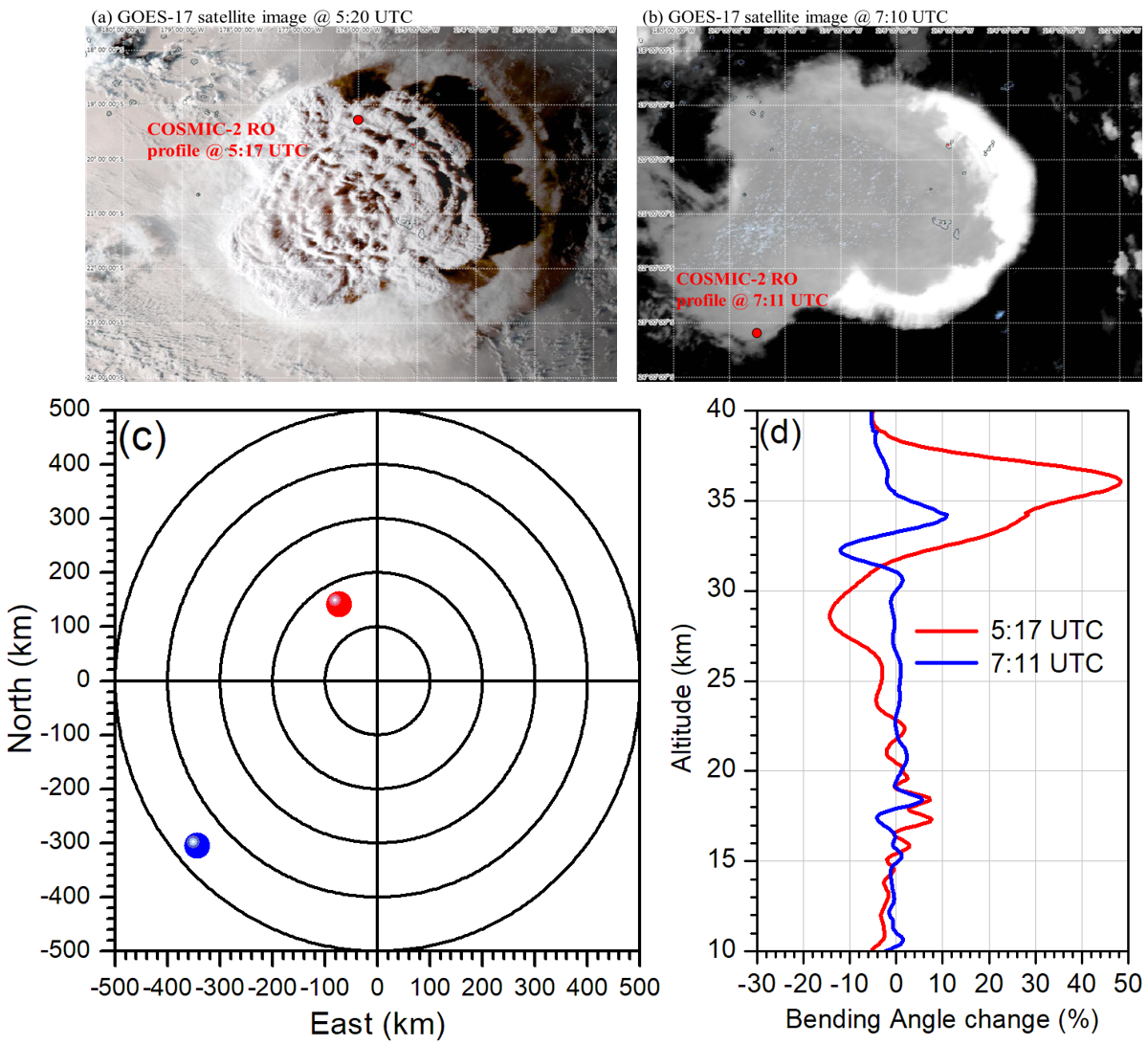The Hunga Tonga-Hunga Ha’apai underwater volcano (20.57°S, 175.38°W) violently erupted on 15 January 2022. The volcanic plume evolution during its initial stages is delineated by using Constellation Observing System for Meteorology, Ionosphere, and Climate (COSMIC)-2 radio occultation (RO) measurements. The bending angle (BA) anomaly over the Tonga volcanic plume (within 200 km from the eruption center) at 5:17 UTC on 15 January shows a prominent peak at higher stratospheric heights. The top of the BA anomaly revealed that negative to positive change occurred at ~38 km indicating the first height where the RO line-of-sight encounters the volcanic plume. The BA anomaly further revealed an increase of ~50% at ~36 km and confirms the volcanic plume reached above ~36 km. Further, the evolution of BA perturbations within 24 hours after the initial explosion is also discussed. From collocated RO profiles with the volcanic plume, we find a clear descending of the peak altitude of the BA perturbation from ~36 km to ~30 km within 24 hours after the initial eruption. The results from the study will provide some insights into advancing our understanding of volcanic cloud dynamics and their implementation in volcanic plume modeling.

